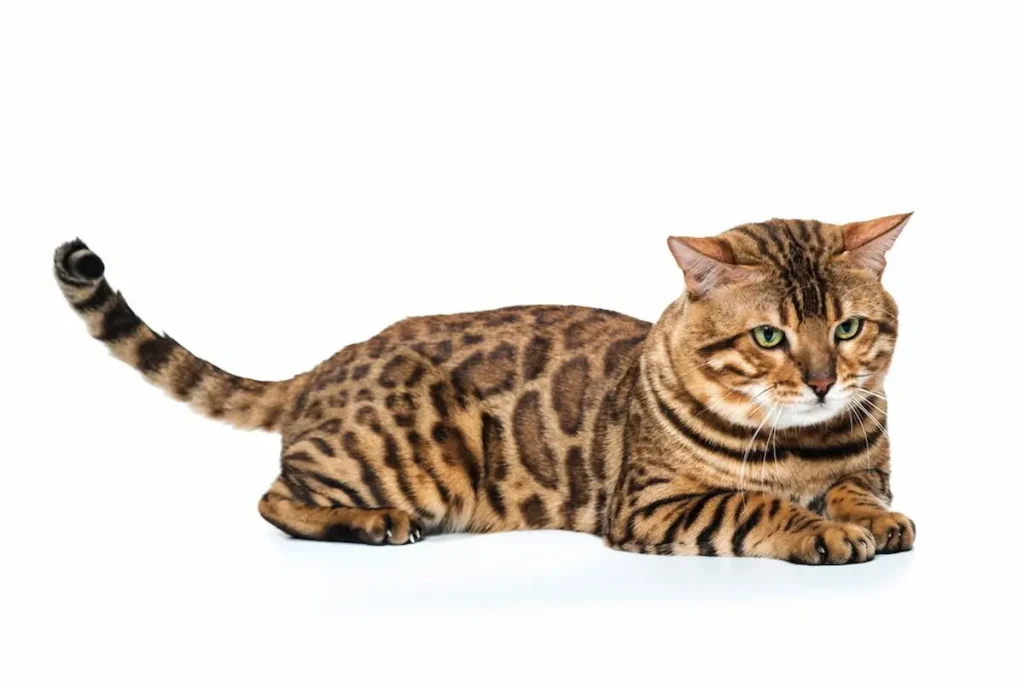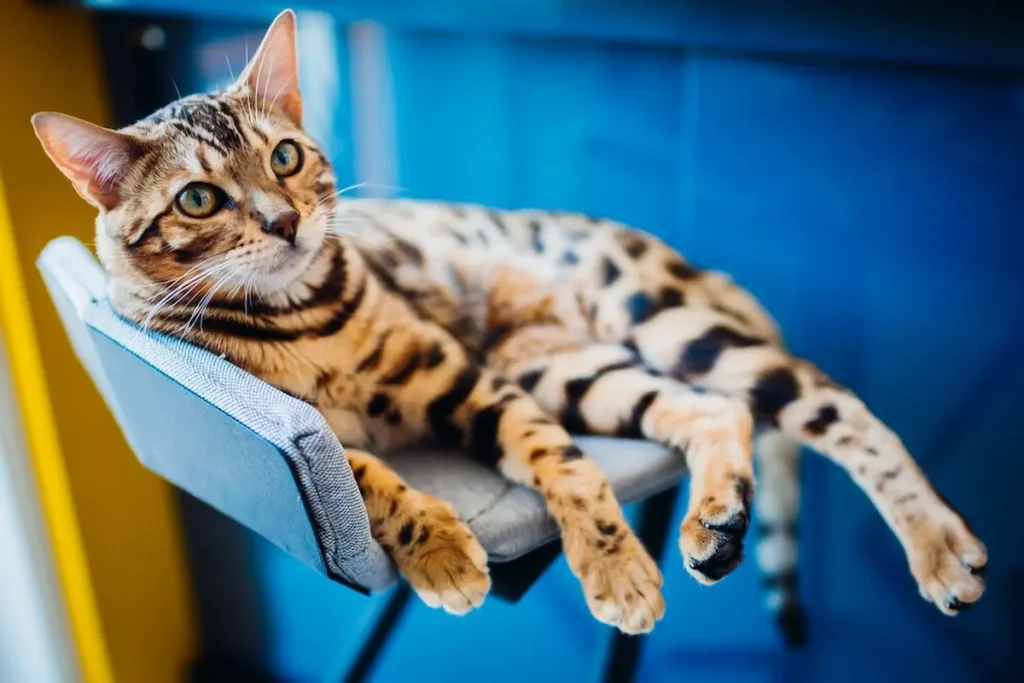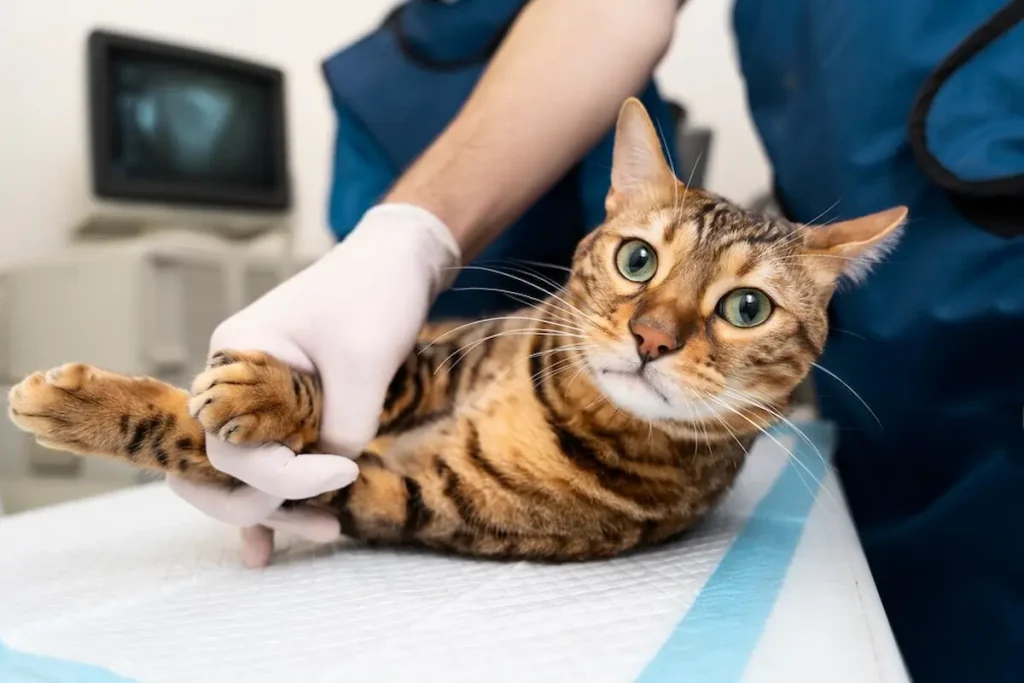Introduction to Bengal Cats
Bengal cats are one of the most captivating cat breeds, known for their exotic appearance that resembles wild leopards. These cats aren’t just striking to look at; they also have lively, playful personalities that make them fantastic pets for the right owner. If you’re considering getting a Bengal cat or already have one, this guide will walk you through everything you need to know to provide the best care for your feline companion.

The Origins of the Bengal Cat
Bengal cats are a hybrid breed developed from crossing domestic cats with the wild Asian leopard cat. The result? A beautifully marked feline that retains the exotic look of its wild ancestor but with a friendly domestic temperament. The breed originated in the 1960s and has since become a popular pet choice for cat lovers who want a bit of the wild in their homes.
Physical Characteristics of Bengal Cats
Bengal cats are medium to large, muscular cats with sleek, spotted coats. Their striking coat patterns are one of their most recognizable features, with rosettes, marbling, or spots that make them resemble miniature leopards. They also have large, almond-shaped eyes, often in shades of green or gold, and a sleek, athletic build.
Related: Egyptian Mau Kittens: The Spotted Gems of Ancient Egypt
Bengal Cat Personality Traits

Temperament of Bengal Cats
Bengal cats are known for their lively and energetic personalities. They love to explore, play, and climb, making them ideal for active households. Bengals are highly intelligent, which means they need plenty of stimulation to stay entertained. If they get bored, they can become mischievous, so keeping them mentally and physically active is key.
Are Bengal Cats Good Family Pets?
Yes! Bengal cats can be great family pets, but they do best in homes where they receive plenty of attention and interaction. They’re social animals that enjoy being around people, and they typically get along well with children and other pets. However, because of their high energy, they might not be the best fit for families looking for a more low-key cat.
Caring for Your Bengal Cat
Nutrition and Diet for Bengal Cats
A Bengal cat’s diet should be high in protein, much like their wild ancestors. Feeding them high-quality, meat-based cat food is essential for their overall health. Some Bengal owners opt for a raw food diet, but always consult your vet before making any drastic changes to your pet’s diet.
Exercise Needs of a Bengal Cat
Bengals are extremely active cats that need a lot of exercise. In fact, a Bengal without sufficient activity can become bored and destructive. Engaging your Bengal with toys, puzzles, and even training sessions will help them stay mentally and physically fit.
Best Toys for Bengal Cats
Interactive toys that challenge your Bengal’s intellect are ideal. Puzzle feeders, laser pointers, and toys that mimic prey can keep your Bengal entertained for hours. Cat trees or climbing structures also provide essential outlets for their energy.
Health and Lifespan of Bengal Cats

Common Health Issues in Bengal Cats
While Bengal cats are generally healthy, they can be prone to certain genetic health issues, including hypertrophic cardiomyopathy (HCM) and progressive retinal atrophy (PRA). Regular vet visits and health screenings are essential to catch any potential problems early.
Regular Veterinary Care
Routine vet care is crucial for keeping your Bengal cat healthy. This includes vaccinations, flea prevention, and annual health checks to monitor for any underlying issues that might affect your cat’s lifespan.
Training and Socializing Bengal Cats
How to Train a Bengal Cat
Bengal cats are highly trainable, thanks to their intelligence. You can teach them tricks, litter training, and even how to walk on a leash! Positive reinforcement with treats and praise works best when training these smart cats.
Socializing Your Bengal Cat
Socializing your Bengal from a young age is important for their development. Introducing them to different people, pets, and environments can help prevent behavioral issues down the line. Bengal cats are naturally social, so they generally enjoy interacting with new experiences.
Grooming and Hygiene for Bengal Cats
Grooming Needs for a Bengal Cat
Bengal cats have short coats that are easy to maintain. A weekly brush should be enough to keep their fur in top condition. Regular grooming also helps you check for any skin issues or parasites that might affect your cat’s health.
Dental and Nail Care
Just like any cat, Bengals need regular dental care to prevent gum disease. Providing dental treats or brushing their teeth can help maintain their oral hygiene. Additionally, nail trimming is essential to keep their claws from becoming too sharp or damaged.
Living Environment for Bengal Cats
Indoor vs. Outdoor Bengal Cats
While some owners may be tempted to let their Bengal cats roam outdoors, it’s generally safer to keep them indoors. Outdoor cats are at risk of accidents, fights with other animals, and diseases. That said, providing a safe outdoor space, like a catio, can give your Bengal the chance to enjoy the outdoors safely.
Creating a Bengal-Friendly Home
Bengals love to climb, so creating vertical spaces for them to explore is a great idea. Cat trees, shelves, and perches around the house will keep your Bengal entertained and active. Interactive toys, scratching posts, and plenty of playtime will also help satisfy their energetic needs.
Conclusion
Bengal cats are a unique and exciting breed, full of energy and intelligence. Their exotic appearance and playful nature make them excellent companions for those who can meet their high demands for activity and mental stimulation. With the right care, a Bengal cat can live a healthy, fulfilling life as a beloved member of your family.
FAQs
1. How long do Bengal cats live?
Bengal cats typically live between 12 to 16 years with proper care and attention to their health and diet.
2. Are Bengal cats hypoallergenic?
While no cat is completely hypoallergenic, Bengal cats are known to produce fewer allergens due to their short coats, which can be helpful for people with mild allergies.
3. Do Bengal cats get along with other pets?
Yes, Bengal cats generally get along well with other pets, especially if they are introduced early. Their social and playful nature helps them fit into multi-pet households.
4. Do Bengal cats need a lot of attention?
Yes, Bengal cats are highly energetic and need regular attention, playtime, and stimulation to keep them happy and healthy.
5. How much exercise does a Bengal cat need?
Bengal cats need a significant amount of exercise. Daily play sessions, climbing structures, and interactive toys are essential to meet their physical and mental needs.

